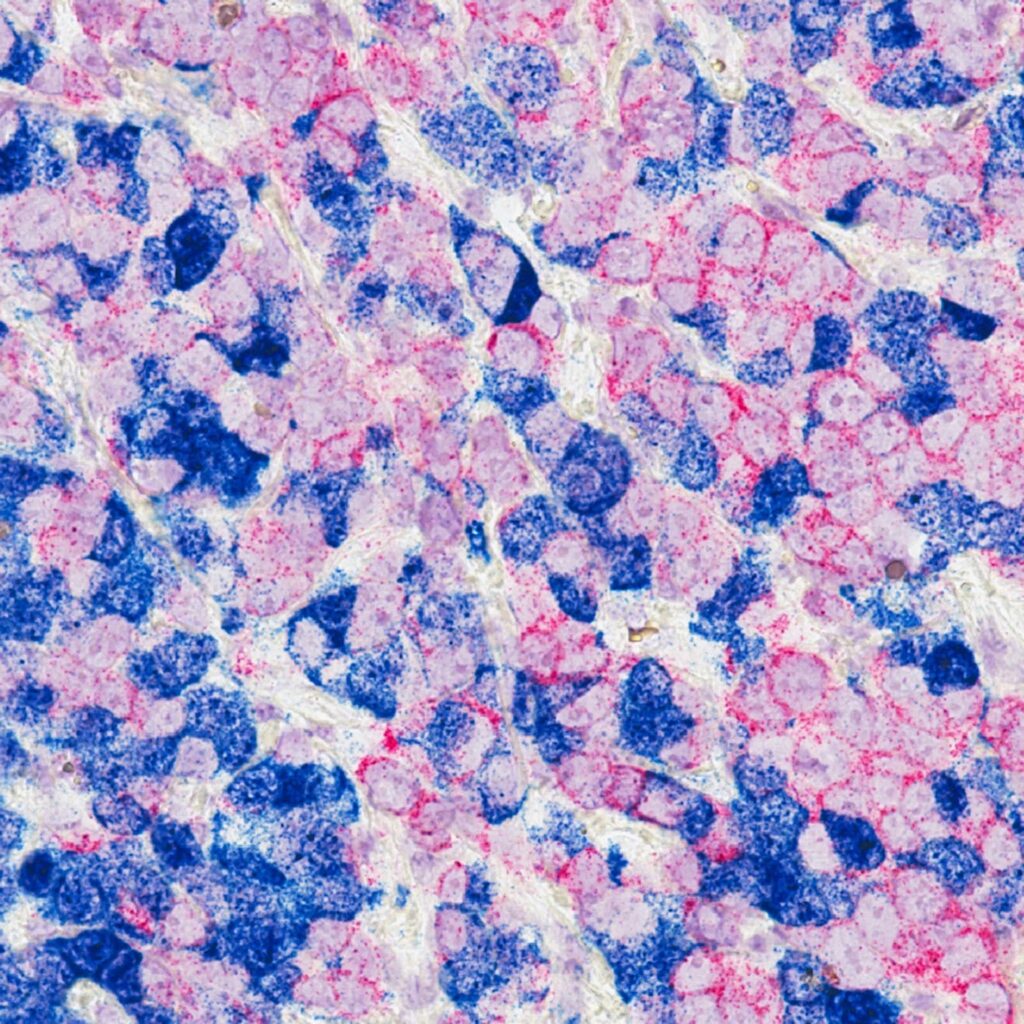Registered dietitian, functional nutritionist, & your new fertility BFF. I'm passionate about helping women thrive during preconception, pregnancy, and postpartum.
Nutrition
PCOS
Fertility
View All
Explore the blog
Hi, I'm Anabelle
Non-toxic Living
Work with our team
Estrogen Detox: What You Need to Know About Hormone Clearance
Estrogen is a crucial hormone that significantly impacts health across all genders, but it plays an especially vital role in women. It’s essential for reproductive health, bone density, cardiovascular function, and mood regulation. However, imbalanced estrogen levels—particularly when excessive compared to other hormones—can lead to a range of issues, from weight gain to more severe conditions like breast cancer. This is where estrogen detoxification becomes essential.
Understanding how estrogen is metabolized, why detoxification matters, and how to support your body in maintaining hormonal balance is key. Below, we’ll explore the science of estrogen detox, the factors that can disrupt this process, and actionable steps to promote optimal hormone clearance.

What Is Estrogen Dominance?
Estrogen dominance occurs when there is too much estrogen in the body relative to progesterone. This imbalance can disrupt normal hormonal functions and lead to symptoms such as:
- Irregular menstrual cycles
- PMS (premenstrual syndrome)
- Weight gain, especially around the hips and thighs
- Breast tenderness
- Mood swings, anxiety, or depression
- Low libido
- Fatigue
If left unmanaged, estrogen dominance may contribute to more severe conditions, including:
- Breast, ovarian, and uterine cancers
- Endometriosis
- Polycystic ovary syndrome (PCOS)
- Fibroids
- Insulin resistance
Factors contributing to estrogen dominance include chronic stress, poor liver function, gut dysbiosis, exposure to environmental toxins (xenoestrogens), and diet. These disruptors impair the body’s ability to properly metabolize and clear estrogen, leading to its accumulation in tissues.
How the Body Metabolizes Estrogen
Estrogen detoxification primarily occurs in the liver through three interconnected phases:
Phase 1 Detoxification
In this phase, liver enzymes convert estrogen into three main metabolites:
- 2-hydroxyestrone (2-OH-E1): Protective and beneficial for the body.
- 4-hydroxyestrone (4-OH-E1): Potentially harmful if not detoxified further, as it can damage DNA and promote cancer cell growth.
- 16α-hydroxyestrone (16α-OH-E1): Harmful in excess and linked to increased estrogenic activity.
Phase 2 Detoxification
Here, estrogen metabolites are made water-soluble through conjugation. This step ensures they can be safely excreted via bile or urine. Methylation, a key part of this process, relies on nutrients like B vitamins and magnesium.
Phase 3 DetoxificationIn this final phase, conjugated estrogen is excreted through the gut or kidneys. A healthy gut microbiome is crucial because an enzyme called beta-glucuronidase, produced by gut bacteria, can reactivate conjugated estrogen, allowing it to re-enter circulation.

Why Estrogen Detox Matters
Efficient estrogen detoxification is essential to prevent the harmful effects of estrogen dominance. Improper clearance of estrogen metabolites can:
- Bind to estrogen receptors in tissues, promoting conditions like endometriosis and fibroids.
- Increase cancer risk, particularly estrogen-receptor-positive breast cancer. The metabolite 4-OH-E1 can damage DNA and stimulate cancer cell growth if not detoxified properly.
When estrogen metabolites are not effectively processed and eliminated, they can circulate in the body, amplifying hormonal imbalances. This can exacerbate symptoms of PMS, disrupt menstrual cycles, and lead to inflammation. Additionally, high levels of harmful estrogen metabolites can interfere with other hormonal pathways, contributing to issues like insulin resistance and thyroid dysfunction.
Supporting your body’s ability to produce protective estrogen metabolites (like 2-OH-E1) and ensuring efficient elimination reduces these risks and improves overall hormonal balance. This not only lowers the likelihood of developing hormone-related cancers but also enhances quality of life by alleviating symptoms such as mood swings, bloating, and fatigue.
Factors That Impair Estrogen Detox
Estrogen detoxification is a delicate process that can be easily disrupted by various factors. When any of these factors are present, your body’s ability to clear excess estrogen effectively is compromised, leading to an accumulation of harmful metabolites. This, in turn, can contribute to hormone imbalances and related health issues. Here are the key factors that can hinder estrogen detoxification:
1. Poor Liver Health
The liver is your body’s powerhouse for processing and detoxifying estrogen. It converts estrogen into metabolites that can be safely excreted from the body. However, if your liver is overburdened or not functioning optimally, estrogen metabolism can be slowed down, leading to a buildup of harmful estrogen metabolites.
- Diet Impact: Diets high in alcohol, processed foods, and trans fats can overwhelm the liver, making it less efficient at detoxifying estrogen. These foods create a toxic environment in the body, leading to inflammation and oxidative stress, which interfere with the liver’s detoxification pathways.
- Support for the Liver: To support liver function, focus on a nutrient-dense diet rich in antioxidants, leafy greens, and cruciferous vegetables like broccoli and kale, which promote healthy liver detox processes.
2. Gut Dysbiosis: The Role of Your Microbiome
Did you know that your gut plays a crucial role in estrogen detoxification? An imbalance in the gut microbiome, known as dysbiosis, can significantly impact estrogen metabolism. When the gut is not balanced, harmful bacteria can thrive, leading to an increase in an enzyme called beta-glucuronidase. This enzyme has the ability to reactivate estrogen metabolites that have already been processed by the liver, causing them to re-enter circulation and elevate estrogen levels.
- Gut Health and Estrogen: Conditions like small intestinal bacterial overgrowth (SIBO) can exacerbate gut dysbiosis, further contributing to this reactivation process. A compromised gut microbiome not only disrupts estrogen clearance but can also lead to symptoms like bloating, digestive discomfort, and inflammation.
- Supporting Gut Health: To support your gut health and estrogen detox, incorporate fiber-rich foods into your diet. Fiber helps bind to estrogen in the digestive tract and ensures its safe excretion. Probiotics and prebiotics, found in foods like yogurt, kefir, and fermented vegetables, can also help balance your gut bacteria and reduce beta-glucuronidase activity.

3. Exposure to Xenoestrogens: The Hidden Estrogen Mimics
Xenoestrogens are synthetic compounds that mimic the structure and effects of estrogen in the body. These chemicals are found in many common products, from plastics and pesticides to personal care items like lotions, shampoos, and deodorants. Over time, repeated exposure to xenoestrogens adds to your overall estrogen burden, making it harder for your body to maintain balance and clear excess estrogen effectively.
- Environmental Toxins: These synthetic estrogen mimics can disrupt the body’s natural hormone balance, causing estrogen dominance and increasing the risk of estrogen-related conditions like fibroids, endometriosis, and certain types of breast cancer.
- Reducing Exposure: To minimize exposure to xenoestrogens, choose natural personal care products that are free of parabens and phthalates. Opt for BPA-free plastics or glass containers for food storage, and choose organic produce to reduce pesticide exposure. Small changes like these can help reduce your body’s overall toxic load and support better estrogen detox.
4. Chronic Stress: The Hormonal Balancer Under Siege
Chronic stress is a modern-day epidemic that impacts nearly every aspect of our health, including hormonal balance. When you’re stressed, your body releases cortisol, a hormone that is crucial for managing stress responses. However, prolonged high levels of cortisol can have a negative impact on estrogen detox.
- Cortisol and Estrogen: Elevated cortisol suppresses the production of progesterone, the hormone that works in balance with estrogen. When progesterone levels drop, estrogen dominance is more likely to occur. Additionally, chronic stress can interfere with liver function, impairing the detoxification process even further.
- Stress Management: To manage stress and support hormonal balance, prioritize self-care practices like mindfulness, deep breathing exercises, and yoga. Regular physical activity can also help lower cortisol levels and improve overall hormonal health. Ensuring you get enough sleep is another key factor in managing stress and supporting your body’s detox pathways.
By understanding how these factors impair estrogen detoxification, you can take steps to minimize their impact and support your body’s ability to metabolize and eliminate estrogen effectively. A balanced diet, healthy gut, stress management, and minimizing exposure to environmental toxins are all important actions that can help optimize estrogen clearance and promote overall hormonal health.
How to Support Estrogen Detox
The good news is that you can take proactive steps to enhance your body’s estrogen detoxification process. Here are key strategies:
1. Prioritize Liver Health
The liver plays a central role in estrogen metabolism. To support liver function:
- Eat cruciferous vegetables: Broccoli, cauliflower, kale, and Brussels sprouts are rich in indole-3-carbinol (I3C) and sulforaphane, which promote protective estrogen metabolism.
- Increase antioxidants: Foods like berries, green tea, and turmeric combat oxidative stress and support liver enzymes.
- Support methylation: Consume foods high in B vitamins (leafy greens, eggs, and legumes) and magnesium to aid conjugation in phase 2 detox.
- Limit alcohol intake: Alcohol burdens the liver and disrupts estrogen detox.
- Use liver-supportive herbs: Milk thistle and dandelion root enhance liver function.
2. Optimize Gut Health
A healthy gut is essential for proper estrogen clearance:
- Consume fiber-rich foods: Fiber binds to estrogen in the gut, promoting excretion. Aim for 25-30 grams daily from vegetables, fruits, legumes, and whole grains.
- Take probiotics: Strains like Lactobacillus and Bifidobacterium reduce beta-glucuronidase activity and improve gut health.
- Avoid inflammatory foods: Limit processed foods, sugar, and artificial additives.
- Stay hydrated: Adequate water intake supports bowel regularity and estrogen elimination.
3. Manage Stress
Chronic stress disrupts hormonal balance. To manage stress:
- Practice mindfulness techniques like meditation or yoga.
- Prioritize sleep: Aim for 7-9 hours of quality rest.
- Engage in regular exercise: Physical activity reduces cortisol and supports estrogen metabolism.
4. Limit Exposure to Xenoestrogens
Minimize environmental toxin exposure by:
- Using natural personal care products free of parabens and phthalates.
- Avoiding plastic containers: Opt for glass or stainless steel for food storage.
- Choosing organic produce: Reduce pesticide exposure.
5. Consider Supplements
Certain supplements can enhance estrogen detox, but consult a healthcare provider before starting any new regimen. Common options include:
- DIM (diindolylmethane): Supports protective estrogen metabolism.
- Calcium-D-Glucarate: Reduces beta-glucuronidase activity, preventing estrogen reabsorption.
- Milk Thistle: Promotes liver function and detoxification.
- Probiotics: Help balance gut bacteria for efficient estrogen clearance.
The Bigger Picture: Estrogen and Breast Cancer

The link between estrogen and breast cancer highlights the importance of efficient hormone clearance. As experts note, it’s not estrogen itself but the balance of its metabolites that determines risk. Shifting your body’s metabolism toward protective pathways while ensuring effective elimination can lower the risk of hormone-related cancers.
Moreover, addressing estrogen dominance isn’t just about reducing disease risk. It’s also about improving quality of life by alleviating symptoms like mood swings, fatigue, and PMS, allowing you to feel more balanced and energized.
Final Thoughts
Estrogen detox is a vital aspect of hormonal health. By supporting your liver, optimizing gut health, managing stress, and reducing exposure to environmental toxins, you can promote efficient estrogen metabolism and lower the risk of hormone-related conditions.
Remember, achieving estrogen balance takes time and consistent effort. If you suspect estrogen dominance or experience related symptoms, consult with a healthcare provider for personalized guidance. Taking proactive steps now can pave the way for a healthier, more balanced future.
Sources
https://drbrighten.com/what-is-estrogen-dominance-what-to-do-about-it/#h-what-is-estrogen-dominance
https://drbrighten.com/estrogen-and-breast-cancer/#h-how-exactly-is-estrogen-linked-to-breast-cancer
https://future-woman.com/the-basics-of-oestrogen-detox/ https://drruscio.com/flush-out-excess-estrogen/
Leave a Reply Cancel reply
The Preconception Playbook
This free playbook provides specific actionable tips to get started on your fertility journey, as well as what to avoid while you're trying to conceive.
Get the free playbook
Functional nutrition for women & couples trying to conceive
Get the Preconception Playbook
Actionable tips to get started on your fertility journey, as well as what to avoid while you're trying to conceive.

Be the first to comment